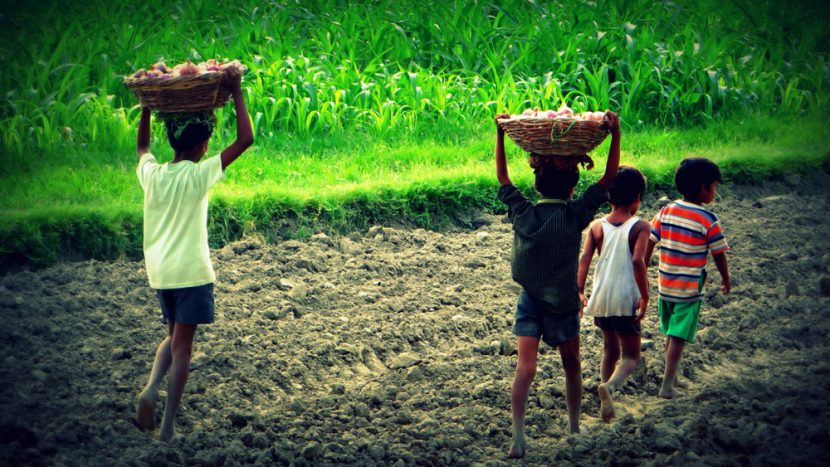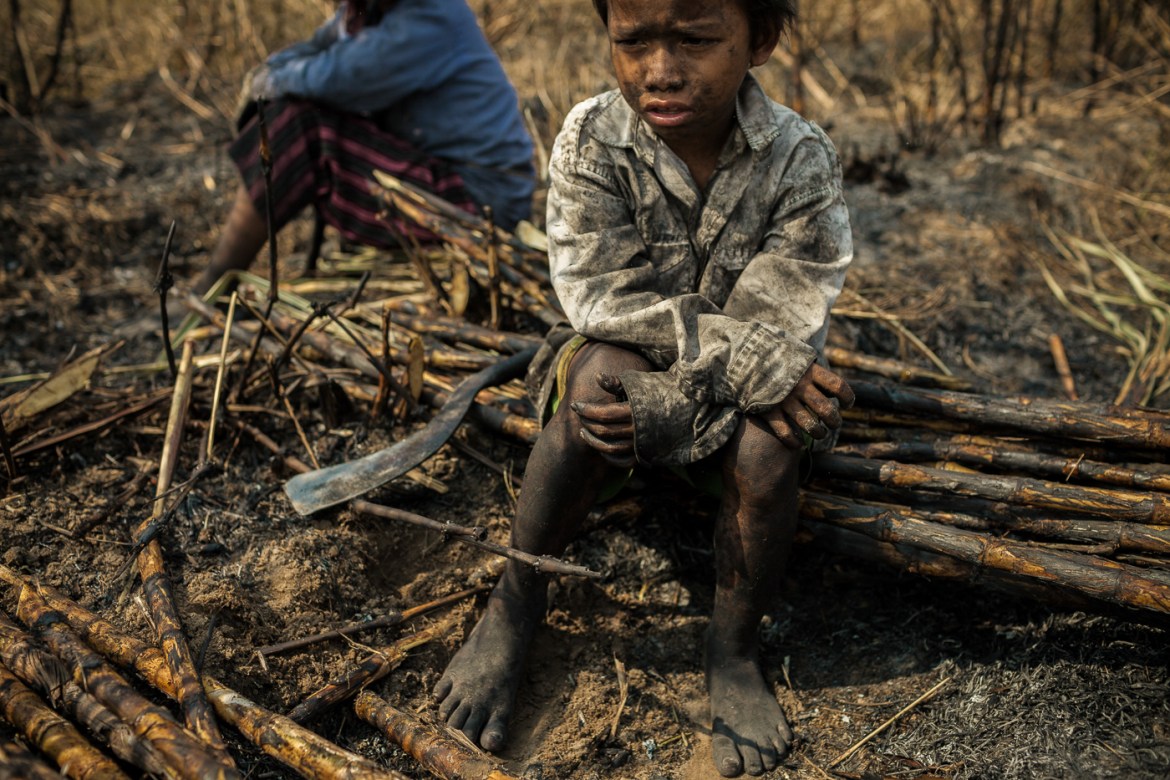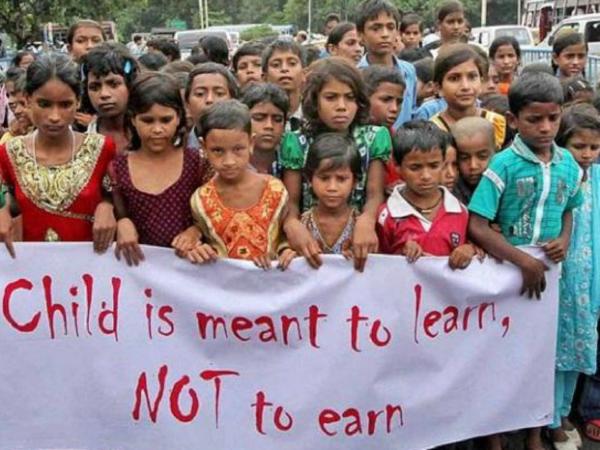On May 1st, we are celebrating “International Workers' Day”, a day that commemorates the achievements and struggles of workers around the world. However, as we recognize the importance of workers' rights, we must also acknowledge the reality that many workers, especially children, are still subjected to exploitation and abuse.
In this article, we shed light on the issue of child labor, a global problem that affects millions of children worldwide. We explore the challenges that children face and examine the solutions that governments, NGOs, and individuals can implement to end this violation of children's rights. By raising awareness of this issue, we hope to encourage more people to take action and help create a world where all children can grow up with dignity and respect.
Understanding the Global Problem of Child Labor: Facts, Figures, and Implications
Child labor is a global issue
that affects millions of children around the world. According to the
International Labour Organization (ILO), there are an estimated 152 million
child laborers worldwide, with the majority of them working in the agriculture
sector. Child labor is defined as work that deprives children of their
childhood, potential, and dignity, and that is harmful to their physical and
mental development.
Child labor is a complex issue that is often driven by poverty, lack of access to education, and cultural norms that prioritize economic survival over children's rights. Child laborers are often forced to work long hours in dangerous and unhealthy conditions, and they are at risk of physical and emotional abuse, as well as exploitation.
Child labor is a violation of
children's rights and has a profound impact on their health, education, and
future prospects. Children who are forced to work are often unable to attend
school or receive the education and training, they need to build a better
future for themselves and their families. This perpetuates the cycle of poverty
and limits their opportunities for social and economic mobility.
The statistics on child labor are sobering. Here are some key figures:
- There are an estimated 152 million child laborers
worldwide.
- 71% of child laborers work in the agriculture
sector, 17% in the service sector, and 12% in the industrial sector.
- 73 million child laborers are engaged in hazardous
work, including work in mines, factories, and construction sites.
- 25 million child laborers are forced to work in
conditions of slavery or debt bondage.
- 64 million children are out of school and engaged
in child labor.
- 1 in 10 children around the world are involved in
child labor.
These statistics demonstrate the
urgent need for action to address the issue of child labor and to protect the
rights and well-being of children around the world.
The Dark Side of Childhood: Exploring the Causes and Consequences of Child Labor
Child labor is a complex issue
that is driven by a range of factors, including poverty, lack of access to
education, cultural norms, and weak legal and regulatory frameworks. Here are
some of the key problems associated with child labor:
- Lack of access to education: Children who are
forced to work are often unable to attend school or receive the education
and training they need to build a better future for themselves and their
families. This perpetuates the cycle of poverty and limits their
opportunities for social and economic mobility.
- Health and safety risks: Child laborers are often
forced to work in dangerous and unhealthy conditions, including mines,
factories, and construction sites. This puts them at risk of injury,
illness, and even death.
- Exploitation: Child laborers are vulnerable to
exploitation, including physical and emotional abuse, sexual exploitation,
and debt bondage. They are often paid low wages or no wages at all, and
they are frequently subjected to long working hours and poor working
conditions.
- Cultural norms: In some cultures, child labor is
seen as a necessary means of economic survival, and children are expected
to contribute to the family's income from a young age. This can make it
difficult to change attitudes towards child labor and to promote
alternative forms of income generation.
- Weak legal and regulatory frameworks: In many
countries, laws and regulations designed to protect children's rights are
weak or poorly enforced, making it difficult to prevent child labor and to
hold employers accountable for exploitation and abuse.
These problems highlight the
urgent need for action to address the issue of child labor and to protect the
rights and well-being of children around the world.
Breaking the Chains of
Exploitation: Strategies and Policies to End Child Labor
To address the issue of child labor, a multifaceted approach is needed that includes a range of solutions and government policies. Here are some of the key strategies that can be used to combat child labor:
- Strengthening education systems: One of the most effective ways to address child labor is to strengthen education systems and ensure that all children have access to quality education. This can help to break the cycle of poverty and provide children with the skills and knowledge they need to build a better future for themselves and their families.
- Enforcing laws and regulations: Governments must
enforce laws and regulations designed to protect children's rights and
prevent child labor. This includes measures such as minimum age laws, laws
against hazardous work, and regulations governing working conditions and
hours.
- Providing economic support to families: Poverty is
a key driver of child labor, and providing economic support to families
can help to reduce the need for children to work. This can include
measures such as cash transfers, microfinance programs, and support for
small businesses.
- Providing alternatives to child labor: Governments
and NGOs can provide alternatives to child labor, such as vocational
training, apprenticeships, and other forms of skill development. This can
help to provide children with alternative forms of income generation and
prevent them from being forced into exploitative and hazardous work.
- Strengthening child protection systems: Governments
must strengthen child protection systems to prevent exploitation and abuse
of child laborers. This includes measures such as establishing child
helplines, providing legal support to child laborers, and ensuring that
child labor is identified and reported.
- Promoting awareness and advocacy: Governments and
NGOs must work to promote awareness and advocacy around the issue of child
labor. This includes raising public awareness about the harms of child
labor and promoting the rights and well-being of children.
Some countries have implemented
policies and programs to combat child labor. For example, in India, the
government has launched the National Child Labour Project, which aims to
rehabilitate child laborers and provide them with education and training. In
Brazil, the government has implemented the Bolsa Familia program, which
provides financial support to poor families in exchange for sending their
children to school.
In conclusion, child labor is a
global issue that affects millions of children around the world. It is a
violation of children's rights and has a profound impact on their health,
education, and future prospects. The statistics on child labor are sobering, and
urgent action is needed to address the issue and protect the rights and
well-being of children.
The problems associated with
child labor are complex, and they require a multifaceted approach that includes
a range of solutions and government policies. Strengthening education systems,
enforcing laws and regulations, providing economic support to families,
providing alternatives to child labor, strengthening child protection systems,
and promoting awareness and advocacy are all key strategies that can be used to
combat child labor.
Governments and NGOs must work
together to address the issue of child labor and to promote the rights and
well-being of children around the world. By working together and taking a
holistic approach, we can create a world where every child is free to enjoy
their childhood and build a better future for themselves and their families.
💖💖💖







